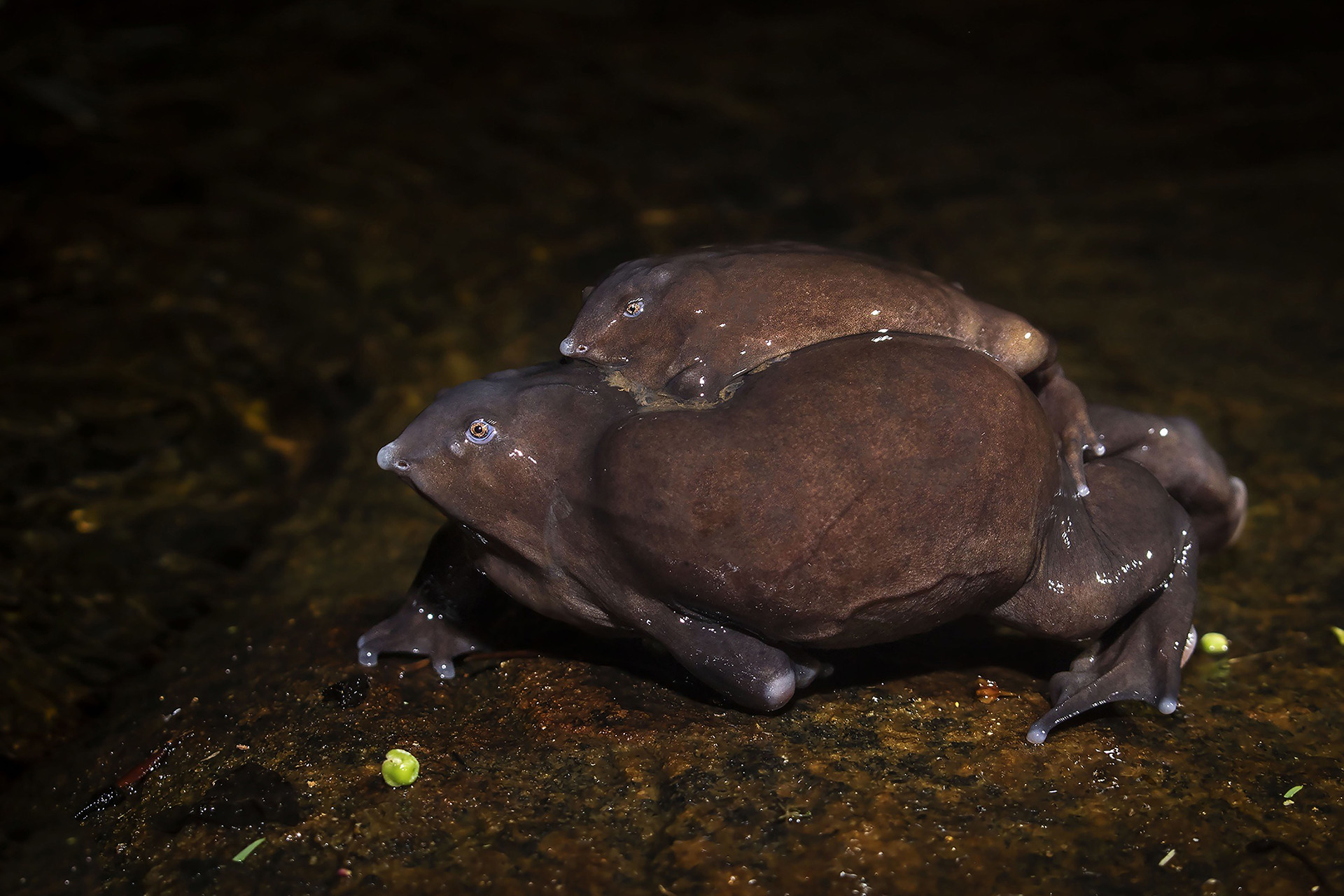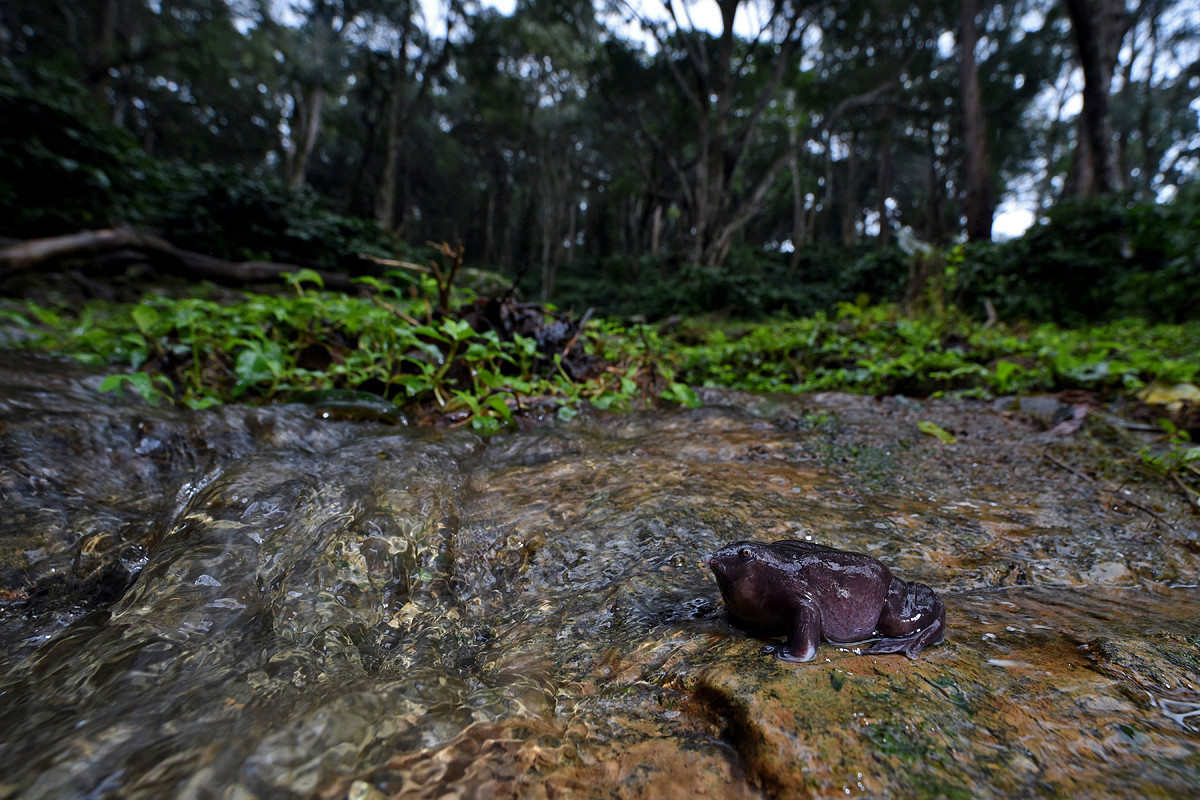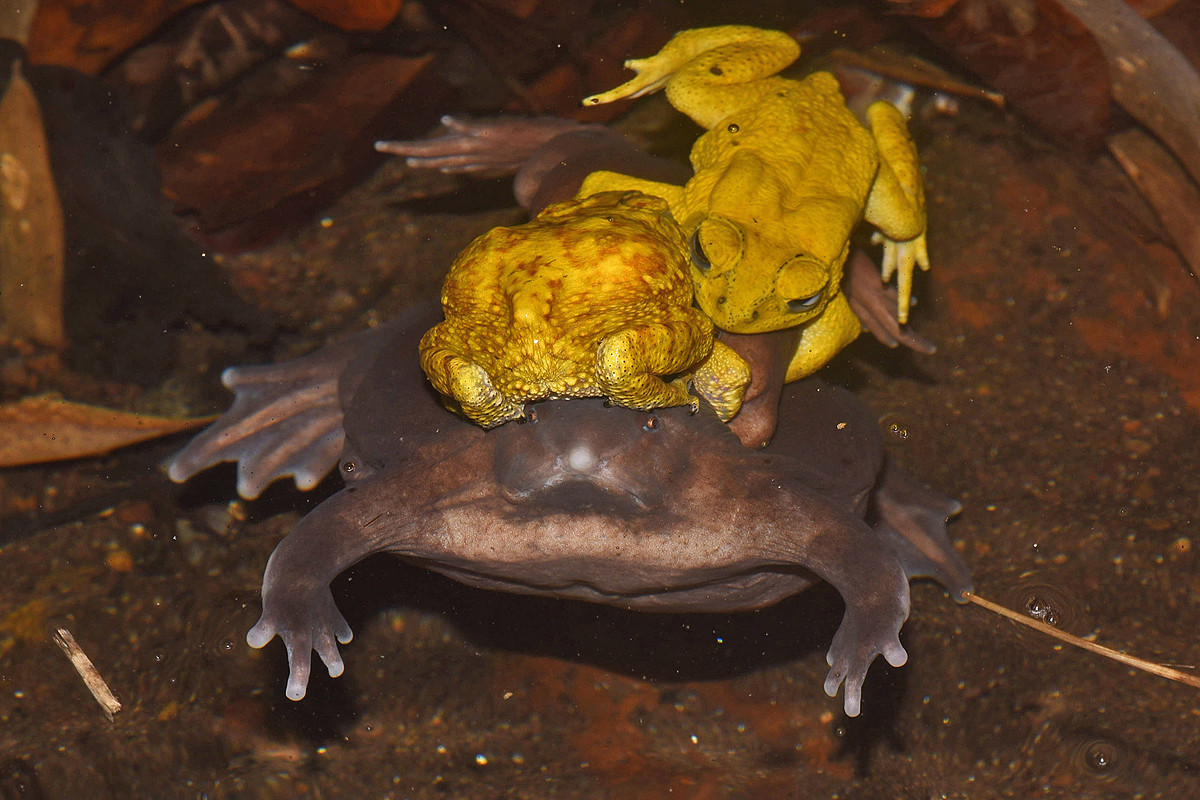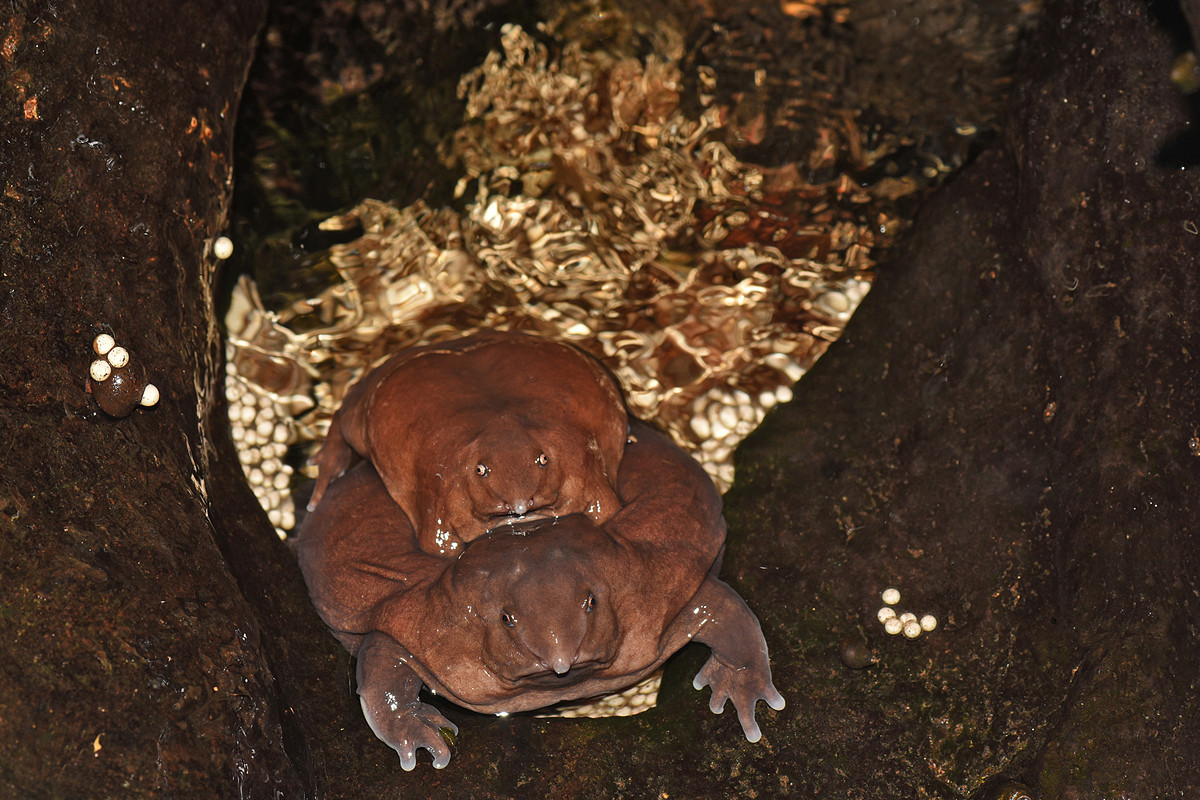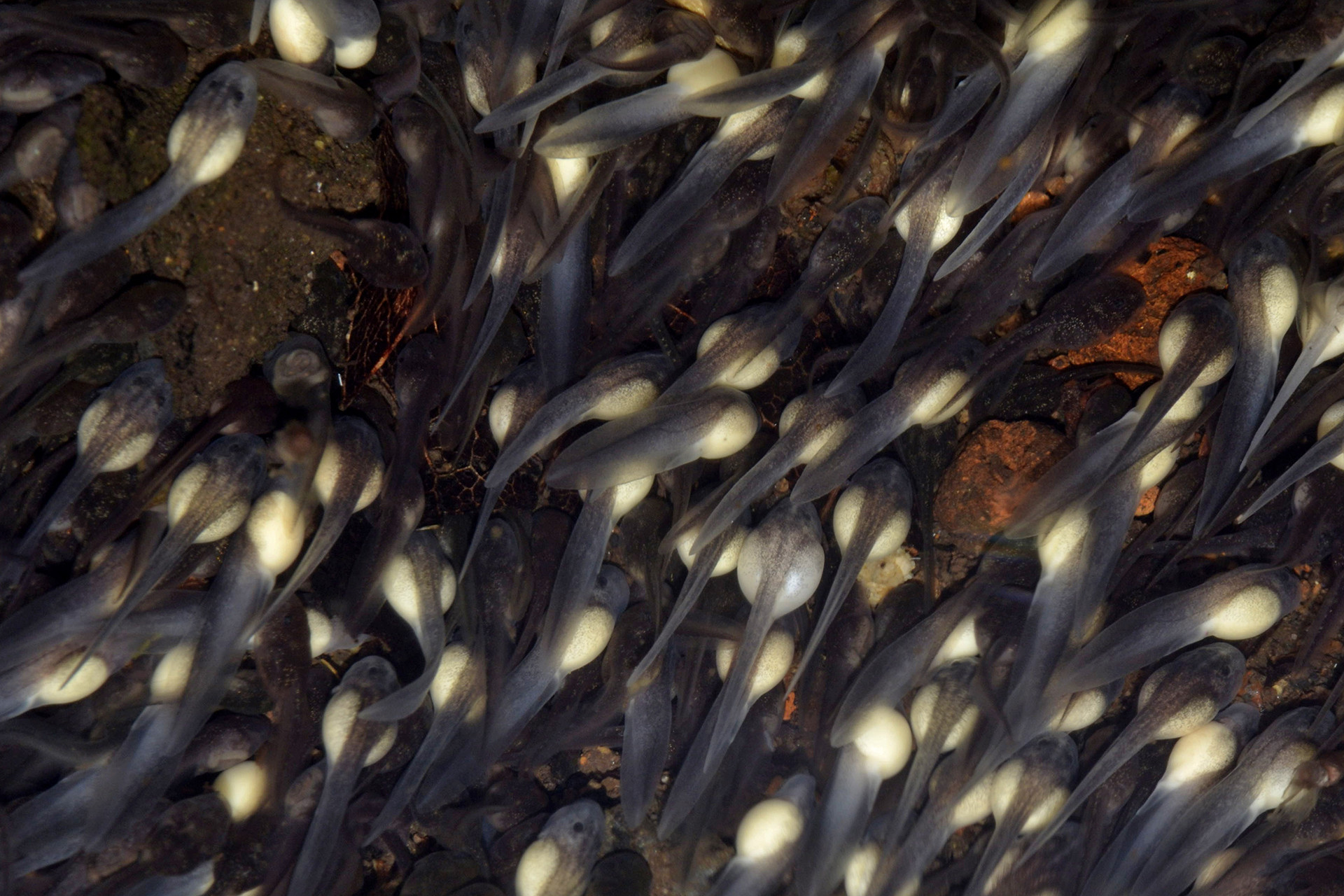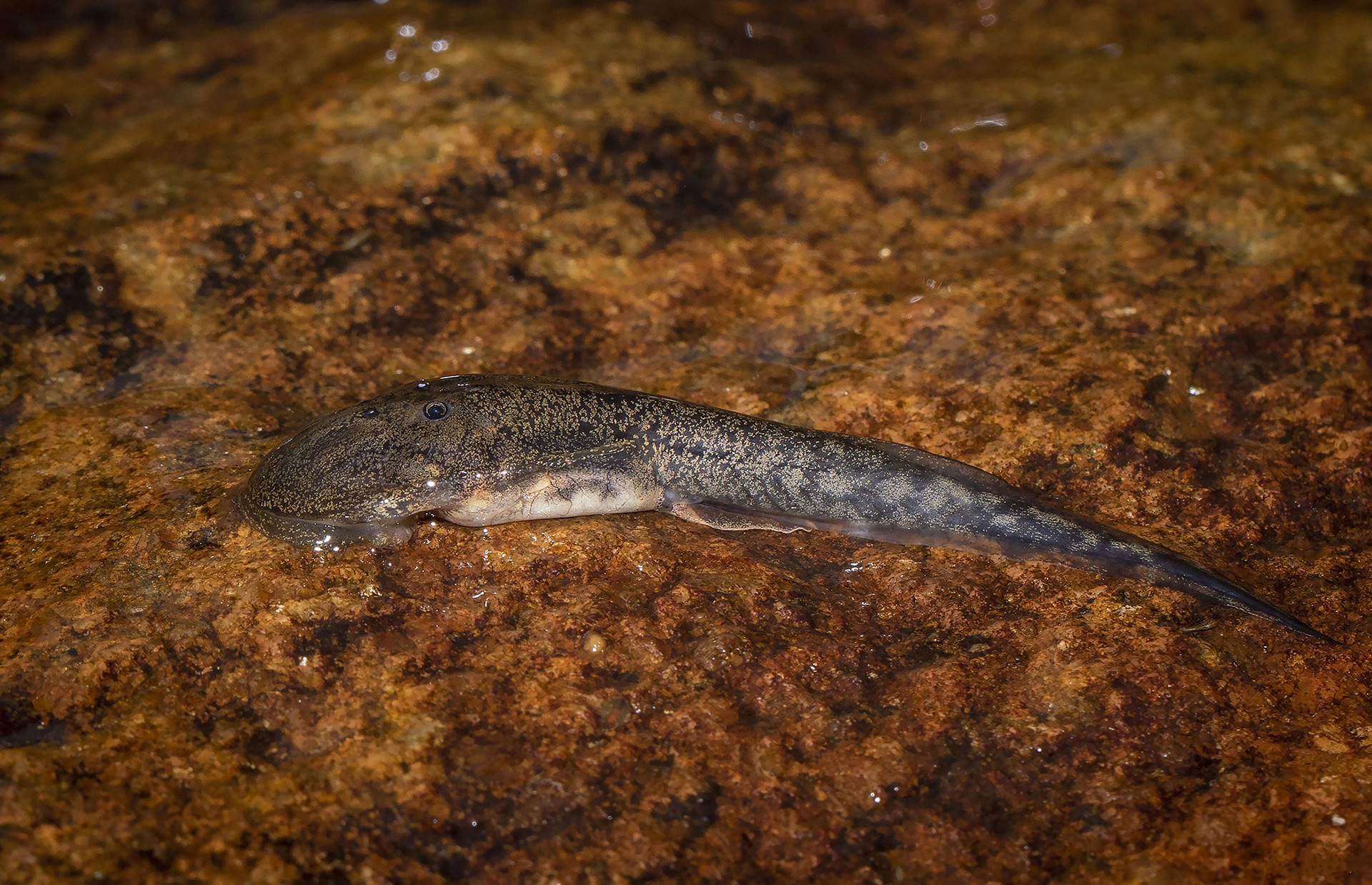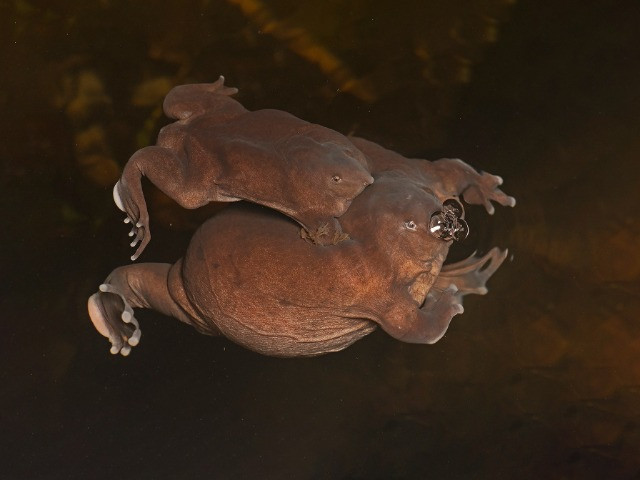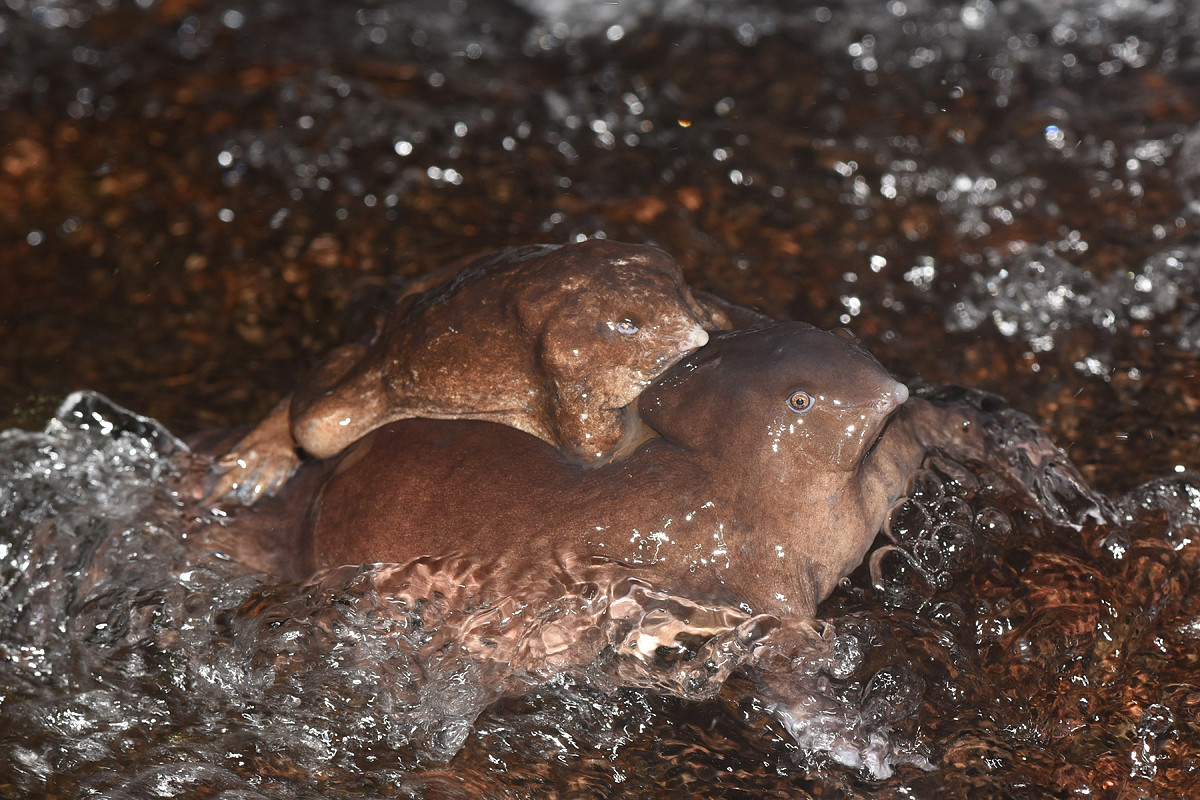In Hindu mythology, the story of the venerable Asura king, Maha-Bali, and the Vamana avatar of Vishnu who steps on the king’s head to push him down to Pa-tala is well-known. As per legend, the king returns once every year to visit his citizens, which is celebrated as the festival of Onam in the southern state of Kerala. In the Kerala-stretch of the Western Ghats, there is a frog species that emerges once every year from the underworld like the great Maha-Bali – the Purple Frog.
The Purple Frog (Nasikabatrachus sahyadrensis) is a member of the Nasikabatrachidae family, the first frog family to be described since 1926. Described in 2003 by Dr SD Biju and Dr Franky Bossyut, its similarities with the zooglossids of Seychelles make it a living fossil, an evidence of the Gondwanaland hypothesis, proving that India was once a part of Africa.
Once every year, Purple Frogs emerge from their underground lairs to lay eggs. They don't even spend a day above ground, only a few hours, during which they face several challenges. The frogs time their emergence with the first monsoon rains that hit the Western Ghats, which signals the start of the breeding season. During this time, egg-laying sites become inundated with the seasonal streams that begin to flow.
As soon as the rains fall, the male frogs surface and start calling from the entrance of their underground tunnels. Mating, known as amplexus in frogs, happens inside the tunnel and the females who dwarf the males in size carry the male frog on their back to the egg-laying site, which is rock crevices in the bed of torrential streams.
The female's journey while carrying the male piggyback is a treacherous one. Every year, we would witness dead females with split abdomens and eggs soaked in blood scattered all over. The team first suspected owls – Brown Fish-owls and Brown Hawk-owls – after observing a few individuals feasting on the eggs. But it turned out to be Checkered Keelbacks that were catching frogs much bigger than what they could swallow. There are also hordes of crabs that prey on the Purple Frog and its eggs. Most of the time, the bulbous female has to waddle through fast-flowing sections of the stream to reach egg-laying sites. With the burden that they carry, it is a miracle they don’t get washed away. In some areas, the amplectant pair is mobbed by other sexually frustrated male toads. These bright yellow Common Indian Toads, in their hormone-crazed state, attempt to mount anything and that includes a purposeful pair of Purple Frogs.
Once the pair makes its way to a crevice in the streambed deemed suitable, like their ancestors have done for millennia, the female deposits around 2000-4000 creamy white-coloured eggs which are then fertilised by the male. The eggs soon develop and hatch into tadpoles that have highly suctorial (sucker-like) mouthparts which allow them to cling onto rocks in fast-flowing currents, where they can graze undisturbed on algae growing on the rocks covered by sheets of torrential water. There are very few frogs that can exploit this seasonal habitat, and this is how Purple Frog tadpoles avoid competition with other aquatic life as well as predators. It takes around 100-120 days for the tadpoles to metamorphose (turn into miniature frogs), after which they retreat underground and begin their fossorial phase.
Very little is known about the underground life of these frogs, although there are records of frogs being found at 12m depths during the construction of wells. Their complete distributional range is also unknown. There are several reasons why this living fossil may have persisted relatively unchanged for mega-annum. The Purple Frog's fossorial life, ability to breed in fast-flowing seasonal streams (exploiting a unique larval niche) and the highly specialised morphology of the tadpoles may be at least some of the reasons for the long evolutionary history of this species.
In 2017, our work towards the conservation of the Purple Frog was supported by a fellowship that was awarded by the EDGE of Existence Programme, a conservation prioritisation tool focused on maintaining evolutionary history. We have closely worked with researchers Rajkumar KP and Nithin Divakar from Kerala and Benjamin Tapley from the Zoological Society of London.
Like many amphibians, habitat destruction seems to have had a detrimental impact on Purple Frogs. Unfortunately, some of the other threats initially thought negligible also seem to take a genuine toll on the species. In the years that the team has diligently followed the breeding of the Purple Frog, there have been instances where a majority of the eggs were destroyed and washed away by heavy rains and times when all the eggs were desiccated due to the failure of continued rains post egg-laying. The fate of the Purple Frog appears to be inextricably linked with the reliability of one of the most unpredictable phenomena on the planet, the monsoon rains.
You may also like to read
In 2011, we found a pair of amplectant Purple Frogs squashed on a road in Idukki District, until which we never thought that vehicles would pose a threat to these endemic frogs. From 2017-2018, we surveyed roads that bisected the habitats of the Purple Frog, and we recorded more than 30 roadkills in just one 5km stretch in the Nelliyampathy Mountains of Palakkad District. Unfortunately, the problem is likely to be more widespread, as several similar linear intrusions are fragmenting Purple Frog habitats across the length of Kerala.
Some Purple Frog breeding sites are also popular touring spots, where littering has proved to be a major threat. The discarded litter clogs up the few available crevices that are essential for their egg-laying. Small check dams that are constructed along streams to regulate flow were found to submerge several historic egg-laying sites, rendering them inaccessible to the Purple Frog. This threat at least appears to be relatively easy to mitigate, provided that the needs of the Purple Frog are considered during the planning and construction process.
As a part of the EDGE project, our team has delivered more than 100 talks to a diverse set of audiences including students, protected area managers, locals and indigenous people living inside forests alongside these frogs. Our talks raise awareness and highlight the urgent conservation needs of this endemic and endangered amphibian. Most recently, we have designed a campaign aimed at drivers, requesting that they take extra care on the roads during the monsoon showers so that these ungainly frogs can reach their breeding sites safely. We also developed a social media campaign portraying the frog as King Maha-Bali to raise the profile of the species among the public by linking it to a culturally significant event like Onam. We even submitted a proposal to make the Purple Frog the state amphibian of Kerala.
During our work, we have encountered these frogs in several well-protected areas, but the majority of the breeding sites occur outside them. The road ahead is still bumpy, but there are hopefully fewer squashed Purple Frogs on it. There remains a great need for a collective effort towards Purple Frog conservation, and we are optimistic that in India, the world’s second-most populous country, there will be enough people willing to lend a hand!

